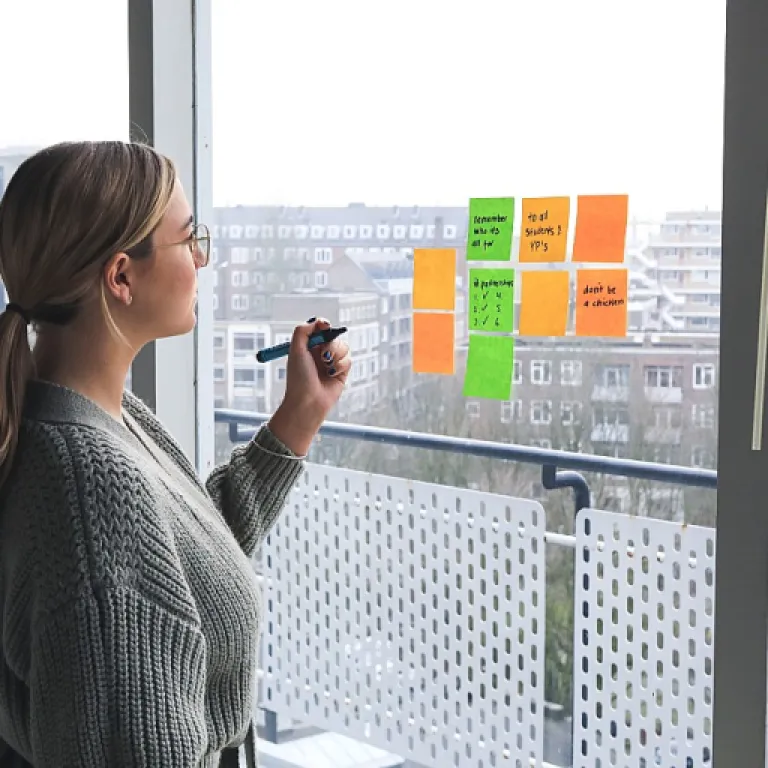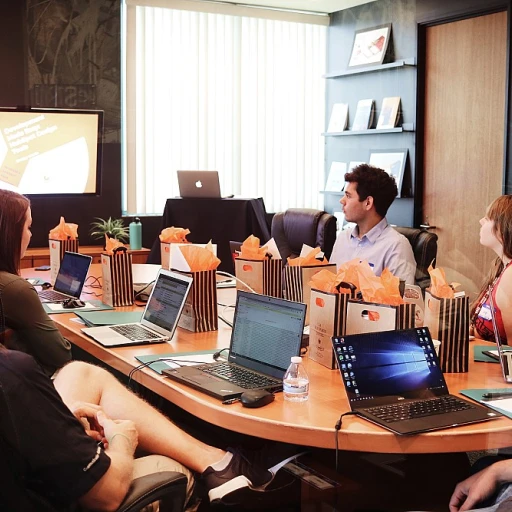
Understanding the Basics of Procurement in Work Tech
The Foundation of Effective Procurement
In the realm of work tech, understanding the procurement process is crucial for any organization seeking operational efficiency and cost savings. At its core, procurement involves acquiring goods and services in a manner that ensures the best possible outcome for an organization. This involves not just purchasing, but an entire ecosystem of steps that include risk assessment, strategic sourcing, and establishing robust supplier relationships.
Procurement forms the backbone of effective supply chain management. It encompasses everything from identifying requirements to managing contracts and ensuring timely delivery of goods and services. A thorough procurement process involves an extensive review of existing contracts with vendors and suppliers, careful evaluation of procurement activities, and alignment with organizational goals.
One critical aspect of procurement is the assessment of risks associated with purchasing. Effective risk management practices ensure that potential disruptions in the supply chain are minimized. Moreover, procurement policies must guide procurement activities to align with the organization's long-term strategies, ensuring indirect procurement does not become a cost liability.
Understanding procurement basics also means recognizing the intricate relationship between procurement and business services. Implementing a transparent procurement process can yield significant cost savings, enhance supplier relationships, and streamline the purchase order process. As organizations navigate the intricacies of procurement, assessing these foundational elements leads to more informed decision-making and strategic insights.
To delve deeper into the dynamics of creative operations that complement procurement efficiency, consider exploring the strategies discussed in enhancing efficiency with creative operations.
Identifying Key Challenges in Procurement Processes
Uncovering Obstacles in Procurement Operations
The procurement landscape in work tech is riddled with complexities that organizations often encounter while trying to streamline their purchasing processes. Identifying these challenges is a crucial step toward improving overall efficiency and achieving cost savings.
One of the primary challenges is related to supplier relationships. Establishing a robust relationship with suppliers is essential for securing favorable terms and reliable delivery of goods and services. However, organizations often face issues such as poor communication, limited trust, and a lack of transparency, all of which can hinder the effectiveness of procurement processes.
Another significant obstacle is risk management. Procurement involves various risks, including vendor non-compliance, supply chain disruptions, and fluctuating market conditions. Conducting a risk assessment allows businesses to mitigate these risks, but many organizations either lack proper assessment mechanisms or fail to update them regularly. This can lead to delayed purchasing, increased costs, and potential compliance risks.
Moreover, complications can arise from inefficient process assessments. Without a thorough evaluation of existing strategies, inefficiencies will likely persist. Organizations must regularly review their procurement methods to identify any potential bottlenecks or areas where improvements are necessary.
Data management is another area of concern. The procurement process generates a substantial amount of data, yet many organizations struggle to convert this data into actionable insights. The absence of data-driven decision-making can lead to missed opportunities for cost reductions and process optimizations.
Lastly, inadequate handling of contracts and purchase orders can further disrupt procurement activities. A well-structured approach to managing contracts and purchase orders ensures that all parties are aligned on requirements and delivery expectations, minimizing disputes and facilitating smoother transactions.
To explore strategies on how to tackle these challenges effectively, you might find it helpful to refer to related resources on enhancing efficiency in creative operations. This kind of comprehensive approach can be instrumental in refining your procurement process, ensuring it becomes a source for sustainable business advantages.
Evaluating Current Procurement Strategies
Reviewing Current Procurement Strategies
Understanding the present procurement structure in an organization is a vital step in identifying opportunities for improvement. A thorough evaluation of current strategies can reveal areas of strength, alongside potential weaknesses that may be hampering efficient procurement activities. One of the initial steps in this assessment involves a systematic review of purchasing processes. This includes examining how purchase orders are currently handled, from initiation to execution, and evaluating the effectiveness of these procedures in terms of cost savings and time efficiency. A comprehensive evaluation should also consider the relationships with suppliers and vendors. Strong supplier relationships can enhance strategic sourcing efforts and mitigate potential risks. By assessing current vendor and contract management practices, organizations can better align their procurement strategies with broader business goals. Effective procurement requires understanding the full landscape of the procurement process. This exploration should extend to indirect procurement strategies, where often less focus is placed but significant cost savings can be achieved. Risk management should be another focal point, as identifying potential risk factors within procurement processes can lead to a more resilient supply chain. Finally, gathering and analyzing sample data related to procurement activities can provide quantitative insights into performance. This analysis aids procurement teams in identifying trends that may not be immediately apparent and adjusting strategies accordingly. For a deeper understanding of how procurement strategies are interconnected with different business functions, our article on Enhancing Efficiency IT Support Tailored for Accountants offers valuable insights.Leveraging Technology for Better Procurement Outcomes
Harnessing Technology for Procurement Excellence
In today's fast-paced business environment, leveraging technology is crucial for enhancing procurement processes. Organizations are increasingly turning to digital tools to streamline procurement activities, reduce costs, and mitigate risks. By integrating technology, businesses can transform their procurement strategies into more efficient and effective systems.
One of the primary benefits of using technology in procurement is the ability to conduct comprehensive risk assessments. Advanced software solutions enable procurement teams to analyze supplier data, review purchase orders, and assess potential risks associated with vendor contracts. This step is vital for ensuring that the organization is not exposed to unnecessary risks and that supplier relationships are managed effectively.
Moreover, technology facilitates strategic sourcing by providing valuable insights into purchasing patterns and supplier performance. With access to real-time data, procurement teams can make informed decisions about which suppliers to engage with, ultimately leading to better cost savings and improved service delivery. This data-driven approach also supports long-term planning and helps in aligning procurement strategies with the overall business objectives.
Implementing digital tools can also enhance the efficiency of the procurement process by automating routine tasks such as purchase order generation and contract management. Automation reduces the likelihood of errors and frees up valuable time for procurement professionals to focus on more strategic activities. This shift not only improves productivity but also contributes to a more agile and responsive procurement function.
Finally, technology plays a crucial role in indirect procurement, where the focus is on acquiring goods and services that are not directly tied to the production process. By using technology to guide procurement decisions, organizations can ensure compliance with procurement policies and achieve significant cost savings.
In conclusion, integrating technology into procurement processes is no longer optional but a necessity for organizations aiming to stay competitive. By embracing digital solutions, businesses can enhance their procurement activities, mitigate risks, and achieve greater efficiency and effectiveness in their purchasing strategies.
Implementing Best Practices for Procurement Process Assessment
Steps to Achieve a Robust Procurement Process Assessment
In evaluating procurement strategies, it is crucial to conduct a thorough assessment of current processes, products, and services to ensure efficiency and cost-effectiveness. Implementing best practices in procurement process assessment requires a structured approach. Here are key steps to consider:- Clarify the Objectives: Identify the long-term goals of your organization’s procurement processes and align evaluation efforts with these objectives. Consider cost-saving initiatives, improving supplier relationships, and minimizing risks.
- Gather and Analyze Data: Collect sample data and review past procurement activities. The data should include purchase orders, contracts, and vendor performance metrics. This information will aid in understanding contractual obligations, identifying purchasing patterns, and assessing risks.
- Conduct a Risk Assessment: A comprehensive risk evaluation is an indispensable part of the assessment. Consider indirect procurement risks, supply chain vulnerabilities, and potential supplier-related challenges. Risk management strategies should be designed and documented to mitigate these risks.
- Engage Stakeholders: Collaborate with procurement teams and relevant stakeholders to enrich insights. These may include departments involved in purchasing goods and services, vendor management, and strategic sourcing. Regular meetings can facilitate a shared understanding of requirements and responsibilities.
- Evaluate Procurement Policies: Review the organization’s procurement policies and procedures. Determine their effectiveness in fostering efficient procurement processes and aligning with business objectives. Amend policies where necessary to ensure compliance and adaptability.
- Implement Feedback and Recommendations: After completing the review and assessment, provide a comprehensive report with actionable recommendations. Implement changes that align with best practices and that will enhance the procurement performance.











